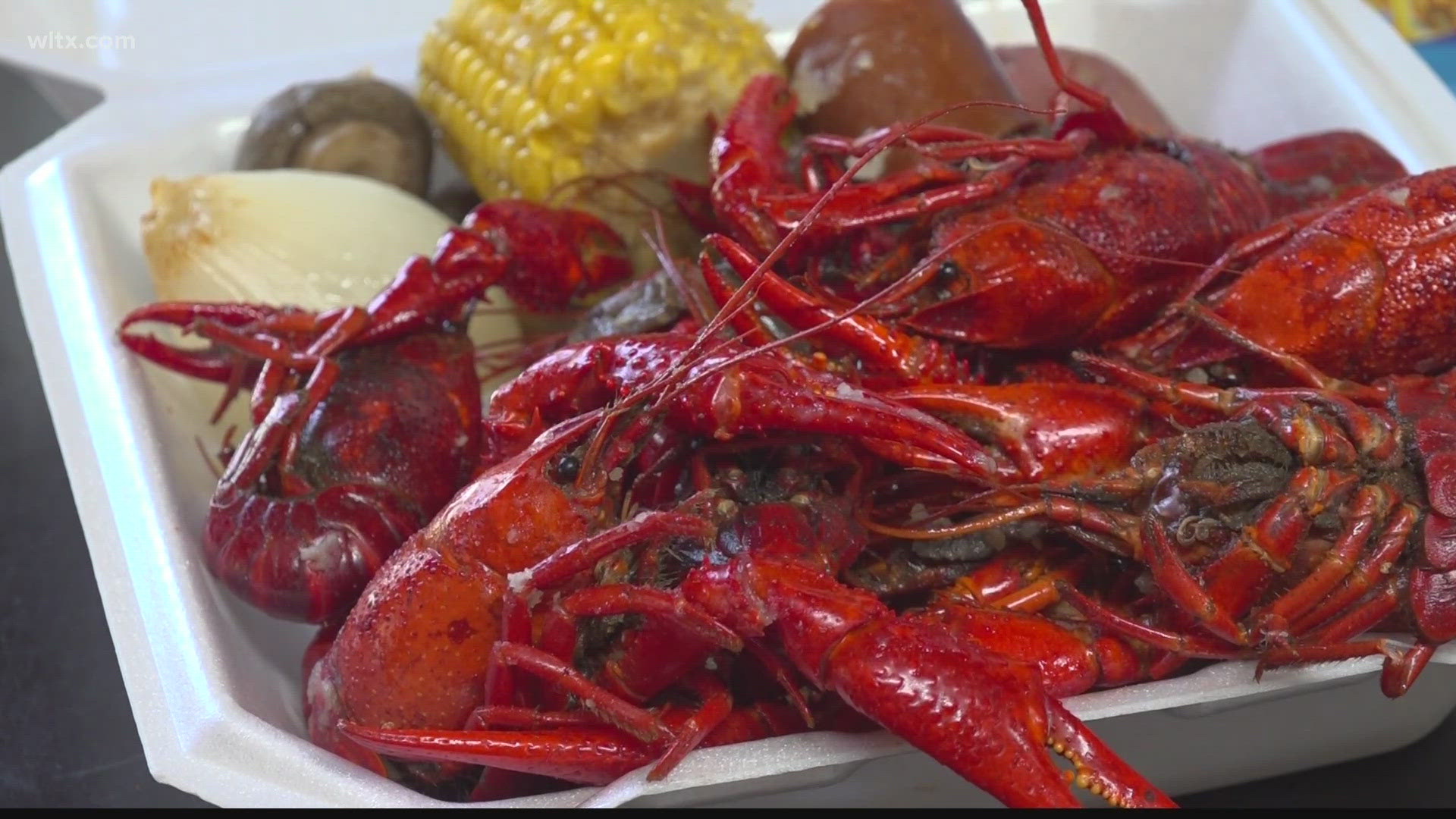RIMINI, S.C. — On Saturday, May 4, the annual Rosewood Crawfish Festival was getting started in Columbia. But did you know there are crawfish farmers right here in the Midlands that are busy all year round?
If you're looking for fresh live crawfish, you can find them at Elliot's Crawfish Farm in Rimini, that's in Clarendon County.
“It’s been a family tradition handed down for 40 years, so we got it down pat anyway. We know what we're doing,” Gary Weathersbee explained. “It’s been a family business since the early 50s.”
When Weathersbee met his wife, Alice, he was introduced to the family business: crawfish farming.
“It's a painstaking process, but in the end, the product is the best there is,” Weathersbee shared. “Getting a product that the people like is the whole ball of wax right there. And we have a system that we've been using for about 18 years, a purging system, and we used to go on the road and sell crawfish everywhere. And when we started this system, the people started coming to us so we didn't have to go everywhere. And we can stay right here and sell out.”
Now, Gary and his wife run Elliott's Crawfish Farm. Alice’s parents started the business, getting crawfish from Winnie Hawthorne, who had a farm in Sumter.
“She got her crawfish from Louisiana to stock hers and then of course Mr. Elliot got his crawfish through her and stocked it,” Gary explained, referring to his father-in-law. “It's a process that runs on a yearly basis and you have to drain the ponds each year and plant rice. The crawfish only eat rice and they’re in a controlled environment.”
It’s a process that Alice’s parents worked to perfect, Gary says.
“When my parents started the business, we had to beg people to try to eat crawfish. I mean it just wasn't popular back in the 80s. And now everybody's going crazy over crawfish,” Alice Weathersbee said. “It's just become a concept for South Carolina now that, you know, crawfish is a good thing. If you can't get shrimp, get crawfish.”
It’s a similarity that’s often cited, Gary says.
“A lot of people like shrimp and it's just like shrimp,” Gary started. “But I believe that the crawfish actually soaks in more flavor than the shrimp does.”
Gary says during the season, the farm usually runs out, selling up to 2,000 pounds of crawfish every week.
“During the season, it’s kind of a Harem Scarem thing around here,” Gary Weathersbee smiled. “People calling, coming in the door, walking in coming off the lake and everything, and normally we sell out every weekend.”
Customers like Paul Myers, who lives near Charleston, has a farm in Manning and spent time working in South Louisiana.
“We had the crawfish taste in our mouth,” Myers said about why he stopped in for a few pounds. “It's that time of year, and this is a whole lot closer than Louisiana.”
Depending on the weather, Alice says they start harvesting anywhere from February to April.
“We're always affected by the weather,” Alice detailed. “Some years we start harvesting in February, some years it's March. This year, It was April. I mean, it was crazy this year. We've never had a late start like this year. We started in April.”
Because the weather didn’t get warmer until later, Alice says the water stayed cool and the crawfish took longer to come out from the ground. Every year, Alice explains her family adapts with the season to continue offering crawfish to the community.
“This business has been my life and it's what I want my kid to grow up with and I want him to make this business prosper just like I have,” Alice said about her son, Tyler.
Tyler Weathersbee works as the trapper, going out to four to five of the farm’s 12 ponds every day.
“Growing up around here, I’ve seen [my parents] do it and I want to be just like them,” Tyler said. “Some people go into a building and stay there all day long. I get to go outside and stay out there all day long.”
Each pond has nearly 100 traps that he checks for crawfish, keeping the big ones and leaving the smaller ones. Tyler says he goes out on the boat Wednesday through Friday, starting his morning around 7 a.m.
Another part of the job: making sure other animals don’t get to the crawfish first. From ducks to 12-foot alligators, Tyler says he helps manage the ponds.
Whatever he harvests come back to purging tanks, where they get cleaned, weighed, bagged and sold live to people like Myers, who appreciate the family-run business.
“It's kind of a southern thing, you know, with people that want to stay with their heritage and what they've done,” Myers said. “I'm really proud that they've taken it over and now we have the other generation taking it over. You can't do any better than that. That's what the south is all about.”
It’s a sentiment that the Weathersbee family appreciates.
“Supporting local people will keep local people going,” Gary said.
The Weathersbees say the season usually ends in late June. Then, they drain the ponds so the crawfish bury in the dirt and lay eggs. The farmers plant rice in the dry ponds, which grows for months and then when the ponds are refilled the crawfish come out, they eat the rice until it’s gone.

